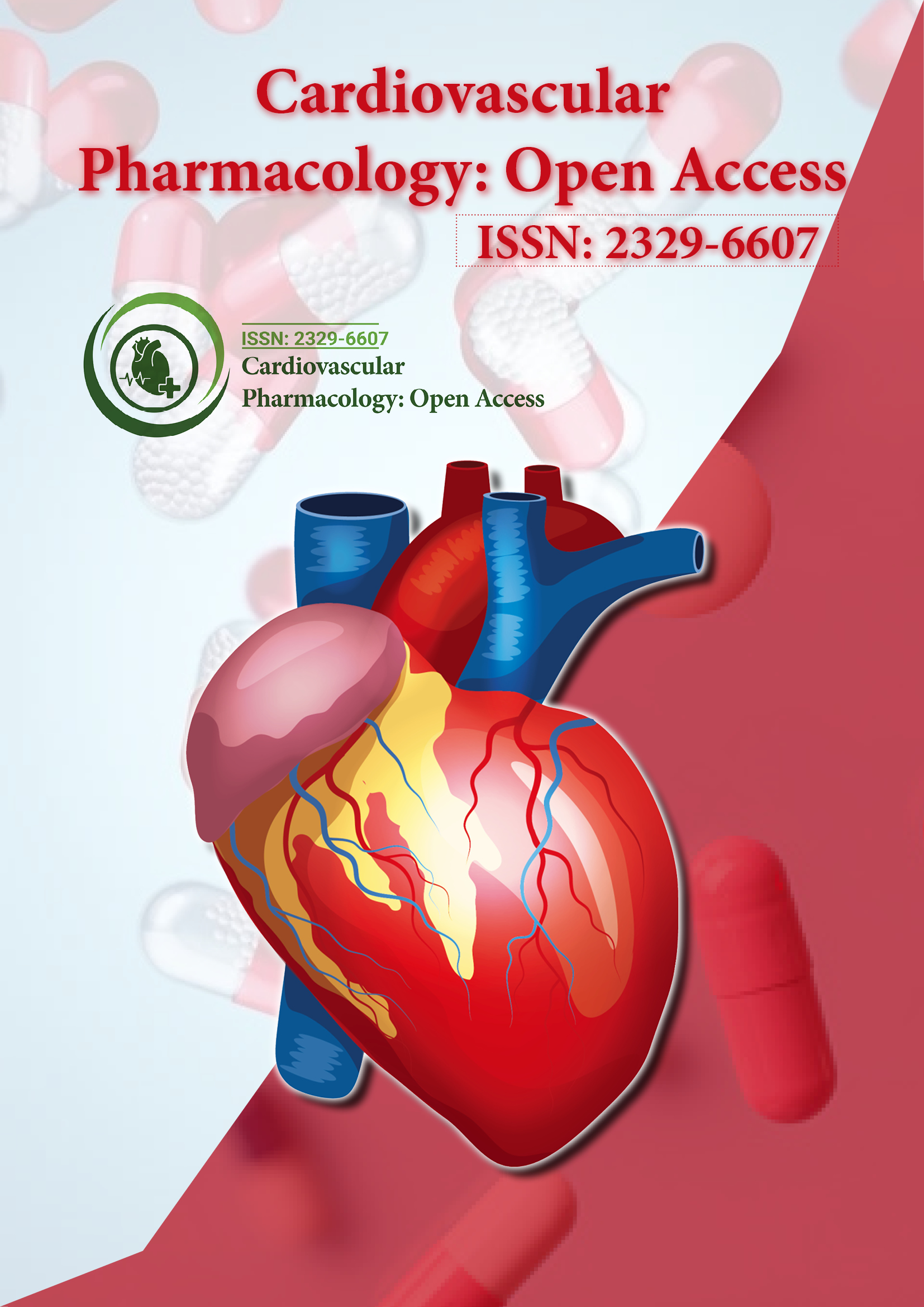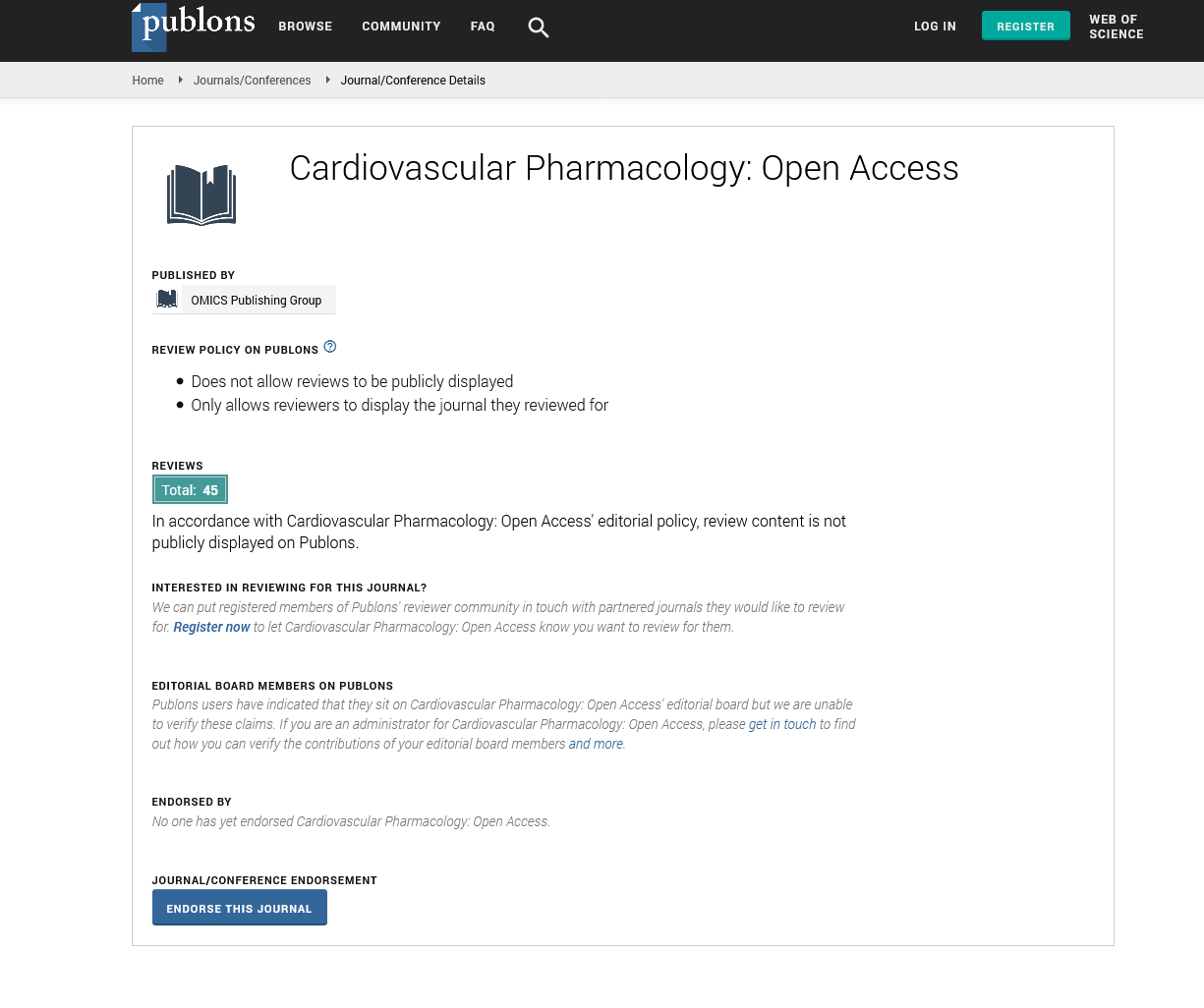Indexed In
- Open J Gate
- Cosmos IF
- RefSeek
- Hamdard University
- EBSCO A-Z
- OCLC- WorldCat
- Publons
- Geneva Foundation for Medical Education and Research
- Euro Pub
- Google Scholar
Useful Links
Share This Page
Journal Flyer

Open Access Journals
- Agri and Aquaculture
- Biochemistry
- Bioinformatics & Systems Biology
- Business & Management
- Chemistry
- Clinical Sciences
- Engineering
- Food & Nutrition
- General Science
- Genetics & Molecular Biology
- Immunology & Microbiology
- Medical Sciences
- Neuroscience & Psychology
- Nursing & Health Care
- Pharmaceutical Sciences
Perspective - (2025) Volume 14, Issue 1
Pharmacokinetics and Cardiovascular Effects of Tramadol in Large Animal Neurosurgery
Sofia Dimitriou*Received: 19-Feb-2025, Manuscript No. CPO-25-28935; Editor assigned: 21-Feb-2025, Pre QC No. CPO-25-28935 (PQ); Reviewed: 07-Mar-2025, QC No. CPO-25-28935; Revised: 14-Mar-2025, Manuscript No. CPO-25-28935 (R); Published: 21-Mar-2025, DOI: 10.35248/2329-6607.25.14.424
Description
Tramadol, a centrally acting analgesic, has long been utilized across human and veterinary medicine for its unique dual-action mechanism—weak μ-opioid receptor agonism and inhibition of norepinephrine and serotonin reuptake. While its efficacy and safety in common surgical scenarios are relatively well characterized in humans, its application in large animal models, particularly in the context of complex procedures such as spinal surgery, remains underexplored. The pharmacokinetic behavior and cardiovascular implications of tramadol under intraoperative conditions in sheep represent a particularly valuable area of investigation, not only for veterinary practice but also for translational preclinical research, given the physiological parallels between ovine and human cardiovascular systems.
Sheep are increasingly employed in spinal surgery research due to anatomical and biomechanical similarities to the human spine. However, their intraoperative pharmacological management requires rigorous consideration, especially regarding analgesic agents that may affect hemodynamic stability or mask physiologic responses. Tramadol’s cardiovascular profile is generally regarded as favorable compared to more potent opioids, but its behavior in anesthetized, surgically manipulated sheep where autonomic tone is changed demands a closer examination.
One perspective is the limited systemic vasodilation and mild bradycardia observed in some animal studies, which may suggest tramadol exerts minimal depressive effects on cardiovascular function. However, such interpretations must be nuanced in light of factors like intraoperative stress, anesthetic interactions (particularly with volatile agents like isoflurane) and spinal reflex modulation, which may independently influence cardiovascular variables such as mean arterial pressure, heart rate and stroke volume. Understanding the extent to which tramadol contributes to these intraoperative shifts is essential, particularly as undetected hypotension or bradycardia may impair spinal cord perfusion during delicate neurosurgical procedures.
Pharmacokinetically, tramadol in sheep appears to follow a biphasic elimination pattern similar to that in other species, but the rate of metabolism, particularly the conversion to the active metabolite O-desmethyltramadol (M1), may vary significantly depending on hepatic enzyme activity, the surgical stress response and hemodynamic status. Given that M1 has higher affinity for μ-opioid receptors and accounts for much of tramadol's analgesic efficacy, intraoperative measurement of both parent drug and metabolite concentrations could provide critical insights into real-time analgesic adequacy.
Intraoperative pharmacokinetics is further complicated by changes in organ perfusion during surgery. In particular, hypotension and vasodilation common during spinal procedures can impact hepatic blood flow and, consequently, the metabolic clearance of tramadol. These alterations could potentially lead to prolonged drug half-life or unpredictable accumulation, with downstream effects on both analgesia and cardiovascular stability. Without real-time pharmacokinetic data, standard dosing regimens risk underdosing (leading to inadequate pain control) or overdosing (resulting in adverse cardiovascular effects).
Moreover, tramadol's interaction with other intraoperative medications such as benzodiazepines, Non-Steroidal Anti-Inflammatory Drugs (NSAIDs), or even corticosteroids—which may be used to reduce inflammation around the spinal cord—can alter its efficacy and safety profile. For example, coadministration of tramadol with α2-agonists like medetomidine, frequently used in ovine anesthesia protocols, may potentiate bradycardia or depress sympathetic tone, which must be balanced against the analgesic synergy they might provide.
From a translational perspective, evaluating tramadol’s behavior in sheep undergoing spinal surgery does more than inform veterinary anesthetic protocols. It provides a critical bridge for testing analgesic strategies in a model that approximates human pathophysiology more closely than rodent models do. This is particularly relevant in preclinical research focused on postoperative pain management, spinal cord injury models and biomaterial testing for intervertebral disc or vertebral body repair.
In conclusion, the cardiovascular effects and intraoperative pharmacokinetics of tramadol in undergoing spinal surgery are multifaceted and clinically significant. Tramadol may provide a favorable balance between analgesic efficacy and cardiovascular safety, but this balance is highly dependent on intraoperative physiological dynamics, metabolic variability and drug-drug interactions. By advancing our understanding of tramadol’s behavior in such surgical contexts, we not only improve animal welfare and veterinary practice but also contribute to the development of safer, more effective analgesic regimens in translational spine research.
Citation: Dimitriou S (2025). Pharmacokinetics and Cardiovascular Effects of Tramadol in Large Animal Neurosurgery. Cardiovasc Pharm. 14:424.
Copyright: © 2025 Dimitriou S. This is an open access article distributed under the terms of the Creative Commons Attribution License, which permits unrestricted use, distribution, and reproduction in any medium, provided the original author and source are credited.


